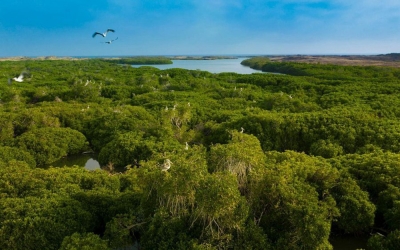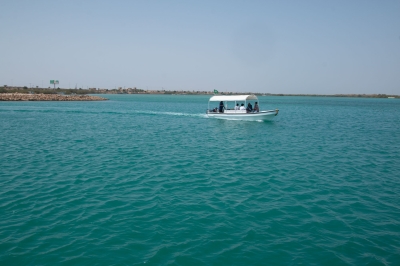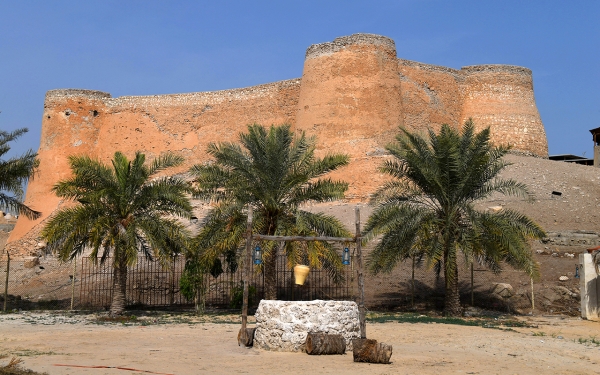
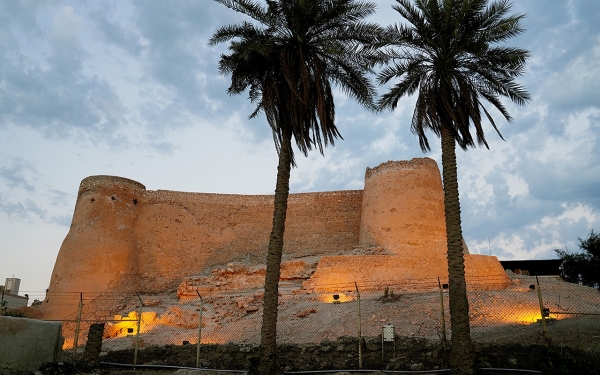
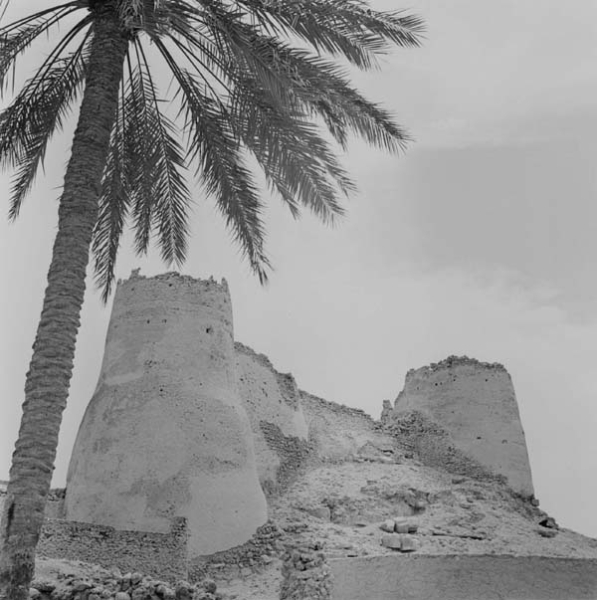
Tarout Island is of economic and natural importance in the Kingdom of Saudi Arabia. The island is famous for its rich history which dates back to more than five thousand years before Christ (BC,) as estimated by some historians. Consequently, it is one of the oldest parts of the Arabian Peninsula, and the fourth largest island in the Arabian Gulf after Qeshm, Bubiyan, and the Kingdom of Bahrain.
Tarout Island was given numerous names, including the Phoenician names Tyros and Ishtarut, as Phoenicians settled on the island before moving to the Mediterranean shores. The island was formed in the Pleistocene epoch (Ice Age.) Vast areas of vegetation, such as palms, cover its landscape, making farming one of the main sources of livelihood for its population, along with fishing.
Tarout Island is one of the most important centers of the Kingdom of Dilmun and played a major role in the history of the region. It witnessed human stability with its energetic and vigorous environment, as shown by its archaeological finds that were uncovered to this day, which is a rare event across many archaeological areas in the world. Moreover, it played the largest role in the commercial life of the Gulf. Mesopotamia and the rest of the coastal region in eastern Arabia depend on it, and it maintains close relations with many civilized areas in the region.
The geography of Tarout Island
Tarout Island is located in the eastern part of the Kingdom, specifically off the coasts of al-Qatif Governorate, and in the center of Tarout Bay, which is surrounded by Ras Tanura in the north and King Abdulaziz Port in Dammam in the south. It is one of the most populated Saudi islands.
Tarout Island is approximately 6 km long and 3.5 km wide, with a total area of 20.3 km. It is nearly 0.5 nautical miles or 1 km away from the Saudi coast. To the north, the island is accessible via three land roads that connect it to al-Qatif: Riyadh Road, Uhud Road, and Ammar bin Yasser Street.
Archaeological sites in Tarout Island
Tarout Island includes more than eleven heritage sites, most notably Tarout Castle, which is located in the middle of a forest of palm trees on top of a hill in the middle of Tarout Island, southwest of the old town in the east of al-Qatif Governorate, and It holds the distinction of being the highest point in the governorate. The castle consists of four towers, three of which are still standing, while the fourth collapsed during one of the historical battles. It has an oval shape that mimics the natural terrain on which it was built.
The southern corner of Tarout Island is home to Darin, a small island separates from the main island of Tarout, and was surrounded by shallow waters, until the water canal between them was rebuilt in 1979. Darin was formerly famous for its seaport and active market, as it was a warehouse for goods brought by ships and naval vessels. Musk, perfumes, spices, and several types of fabrics, textiles, and swords were some of its most famous goods. Moreover, Darin was the trade hub for pearls in al-Qatif.
Development approach for Darin and Tarout Island
To maximize the use of the island's comparative advantages from the heritage, environmental, and tourism aspects, His Royal Highness Prince Mohammed Bin Salman Bin Abdulaziz Al Saud, Crown Prince, Prime Minister, and Chairman of the Council of Economic and Development Affairs, announced in 2022 the adoption of the development approach for Darin and Tarout Island and its future initiatives, as well as the establishment of a development corporation for the island.
An estimated budget of SAR2.644 billion was allocated to implement development initiatives and programs. The comparative and competitive components and advantages of the island were identified according to three main pillars: preserving the cultural and historical heritage of the island, reviving natural sites and the environment, improving the quality of life, and enhancing its tourism economy.
In an attempt to achieve the goals of the island's development approach, over nineteen qualitative initiatives were developed. On the cultural side, Darin Castle and Airport will be developed as two heritage tourist destinations, several cultural and heritage festivals will be organized, and multiple pedestrian paths will be constructed within the heritage areas of the island. On the environmental side, the largest mangrove forest will be established on the shores of the Arabian Gulf, and a number of hotels and eco-lodges will be constructed in natural areas. In addition to improving the quality of life on the island by constructing roads, infrastructure, and public parks, which include several stadiums and modern sports facilities.
This development approach results in a significant economic and social impact in the region by contributing to the gross domestic product (GDP) with an average of SAR297 million annually, thus increasing the number of tourists to 1.36 million by 2030. Moreover, the approach will generate thousands of job opportunities and will allocate up to 48 percent of the island's area for squares, public parks, waterfronts, roads, and facilities.
Related quizzes
Related articles

